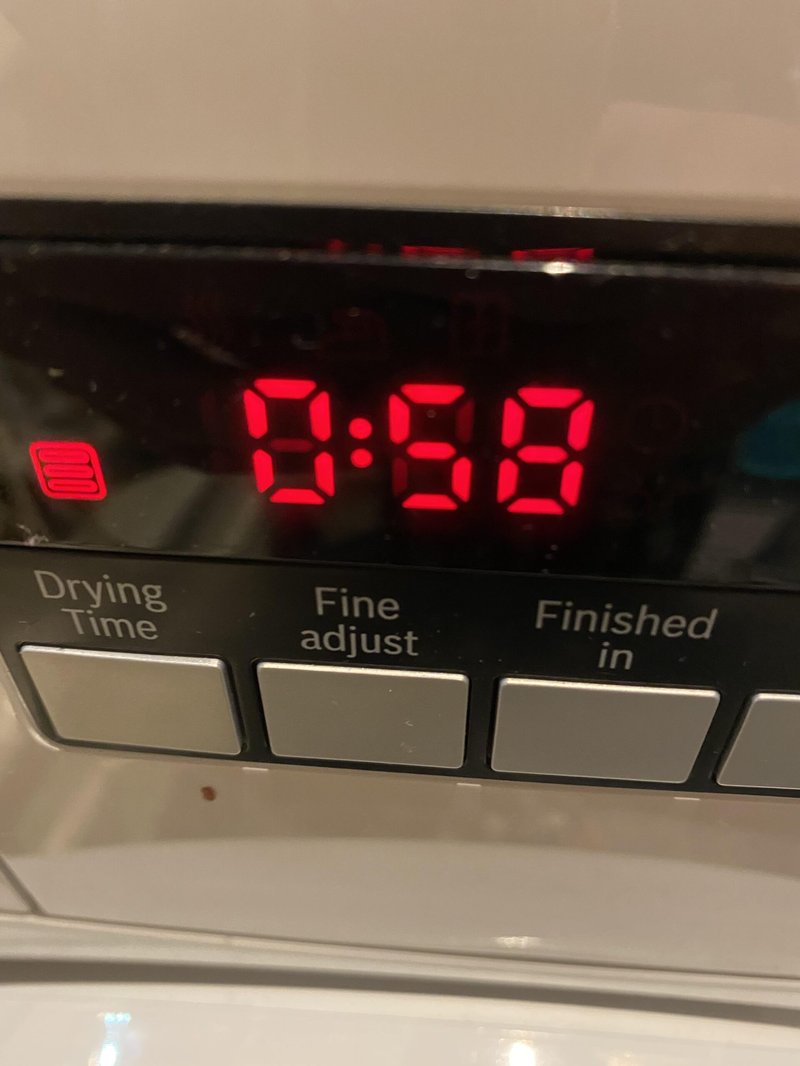
Why does this code appear, though? Well, modern appliances like Bosch dryers are equipped with sensors and diagnostic tools to help identify issues before they turn into full-blown problems. The “SE” error code is one such alert, indicating that something’s amiss under the hood. It’s akin to your car’s check engine light—it doesn’t tell you exactly what’s wrong, but it signals that attention is needed. So, let’s delve into what could be causing your dryer to send up this particular flare.
What Does the SE Error Code Mean?
The “SE” code on a Bosch dryer is specifically related to sensor issues. What sensor, you ask? In most cases, this code is triggered by a problem with the moisture sensor. The moisture sensor is an essential component of your dryer; it detects how damp your clothes are and helps the machine decide how long to dry them. When functioning correctly, it ensures that your clothes are not over-dried, which can lead to fabric damage, or under-dried, which leaves them wet and musty.
Imagine this sensor as the brain of a weather forecaster inside your dryer. It gauges the current “weather” conditions—essentially the wetness of your clothes—and adjusts the dryer’s cycle accordingly. If something goes wrong with the sensor, the dryer can’t figure out when it’s time to stop the cycle. This confusion is when the “SE” code usually makes its unwelcome appearance. But don’t stress; once you know this, you’re halfway to solving the problem.
What might cause the sensor to falter? There could be several culprits: a buildup of lint or residue blocking the sensor, a software glitch, or even an accidental shift in the sensor’s position. Each of these factors can prevent the sensor from accurately reading the moisture levels, leading to that wicked “SE” error.
How to Diagnose Sensor Issues
Now, let’s tackle how to diagnose and perhaps even fix the sensor issue. Diagnosing a sensor problem is not as complex as it sounds, and you don’t need to be a tech wizard to get through this. In fact, some basic troubleshooting might just do the trick!
Firstly, start by checking for any visible lint buildup. This is similar to checking your phone’s camera lens when it seems blurry. A layer of lint can obstruct the sensor, causing it to misread the moisture levels. Grab a clean cloth and gently clean around the sensor area, which is typically located inside the drum near the lint trap.
Another simple yet effective step is to reset your dryer. This works much like rebooting your computer when it’s running slow. Sometimes, the problem is just a minor glitch in the system that can be resolved with a quick reset. Unplug the dryer from the power source, wait a few minutes, then plug it back in and test it out. If the “SE” code disappears, you might have just solved the issue without breaking a sweat!
If the basic cleaning and reset don’t help, you may need to dive a bit deeper, perhaps adjusting or inspecting the sensor itself. This step might require consulting your dryer’s manual or contacting a professional if you’re not comfortable poking around inside the machine.
When to Call a Professional
Sometimes, even the best detective work from your side might not resolve the issue, and that’s perfectly okay. If the “SE” code persists despite your efforts, it could be time to call in a professional. Consider this a partnership with your dryer’s repairman; they have the tools and expertise required to diagnose issues that are beyond home troubleshooting.
Professionals can run detailed diagnostics to determine whether the sensor needs recalibration, repair, or replacement. This step is like taking your electronics to a ‘doctor’ to get them back in working order. They can also check for other hidden issues that might not be immediately obvious, such as wiring problems or deeper mechanical faults.
While waiting for the technician, avoid using the dryer to prevent further issues. It’s also a good time to consider regular maintenance tips that might prevent such issues in the future. Keeping your sensor clean, avoiding overloading your dryer, and scheduling annual maintenance checks can go a long way in keeping your appliance functioning smoothly.
Preventative Tips to Avoid SE Error Code
Prevention, as they say, is better than cure. Regular maintenance can help you avoid the pesky “SE” code in the future. Think of it as taking preventive steps to ensure smooth sailing for your household chores.
Firstly, make it a habit to clean your lint trap after every use. This is akin to brushing your teeth daily to prevent cavities. A clean lint trap ensures better airflow and reduces strain on the dryer, indirectly protecting the sensor from being overwhelmed by lint.
Next, consider running a cycle with your dryer on an empty drum every month using a specialized cleaning tablet. This is similar to a detox for your dryer, flushing out residue and ensuring everything remains in tip-top shape. It’s a small step that can save you a lot of hassle down the line.
Lastly, understand your dryer’s load capacity, and avoid overloading it. Overloading can strain the dryer and negatively impact sensor readings. Place your clothes loosely in the drum, allowing adequate space for proper drying and accurate moisture detection. This might seem minor, but like any machine, your dryer performs best when not pushed to its limits.
In conclusion, dealing with the “SE” code on your Bosch dryer doesn’t have to be daunting. With a little patience and regular maintenance, you can keep this error at bay and ensure your dryer runs smoothly for years to come.